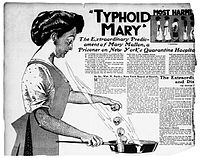
Chemoenzymatic Total Synthesis of Haemophilus ducreyi Lipooligosaccharide Core Octasaccharides Containing Natural and Unnatural Sialic Acids.
Sign Up to like & getrecommendations! Published in 2023 at "Organic letters"
DOI: 10.1021/acs.orglett.3c00657
Abstract: The first total synthesis of Haemophilus ducreyi lipooligosaccharide core octasaccharides containing natural and unnatural sialic acids has been achieved by an efficient chemoenzymatic approach. A highly convergent [3 + 3] coupling strategy was developed to… read more here.
Keywords: lipooligosaccharide core; sialic acids; ducreyi lipooligosaccharide; total synthesis ... See more keywords

Multiple Class I and Class II Haemophilus ducreyi Strains Cause Cutaneous Ulcers in Children on an Endemic Island
Sign Up to like & getrecommendations! Published in 2018 at "Clinical Infectious Diseases"
DOI: 10.1093/cid/ciy343
Abstract: Background Together with Treponema pallidum subspecies pertenue, Haemophilus ducreyi is a major cause of exudative cutaneous ulcers (CUs) in children. For H. ducreyi, both class I and class II strains, asymptomatic colonization, and environmental reservoirs… read more here.
Keywords: class; cutaneous ulcers; haemophilus ducreyi; island ... See more keywords

Erratum for Brothwell et al., “Haemophilus ducreyi Infection Induces Oxidative Stress, Central Metabolic Changes, and a Mixed Pro- and Anti-Inflammatory Environment in the Human Host”
Sign Up to like & getrecommendations! Published in 2023 at "mBio"
DOI: 10.1128/mbio.03522-22
Abstract: Volume 13, no. 6, e03125-22, 2022, https://doi.org/10.1128/mBio.03125-22. Page 3, line 17 from bottom: “shown in Table 1” should read “shown in Table 1; the number of reads for samples from the pilot study are in… read more here.
Keywords: ducreyi infection; induces oxidative; infection induces; brothwell haemophilus ... See more keywords

LAMP4yaws: Treponema pallidum, Haemophilus ducreyi loop mediated isothermal amplification − protocol for a cross-sectional, observational, diagnostic accuracy study
Sign Up to like & getrecommendations! Published in 2022 at "BMJ Open"
DOI: 10.1136/bmjopen-2021-058605
Abstract: Introduction Yaws, caused by the bacterium Treponema pallidum subsp. pertenue, is a neglected tropical disease targeted for eradication by 2030. Improved diagnostics will be essential to meet this goal. Diagnosis of yaws has relied heavily… read more here.
Keywords: pallidum; cross sectional; test; treponema pallidum ... See more keywords

Direct Whole-Genome Sequencing of Cutaneous Strains of Haemophilus ducreyi
Sign Up to like & getrecommendations! Published in 2018 at "Emerging Infectious Diseases"
DOI: 10.3201/eid2404.171726
Abstract: Haemophilus ducreyi, which causes chancroid, has emerged as a cause of pediatric skin disease. Isolation of H. ducreyi in low-income settings is challenging, limiting phylogenetic investigation. Next-generation sequencing demonstrates that cutaneous strains arise from class… read more here.
Keywords: whole genome; cutaneous strains; haemophilus ducreyi; direct whole ... See more keywords